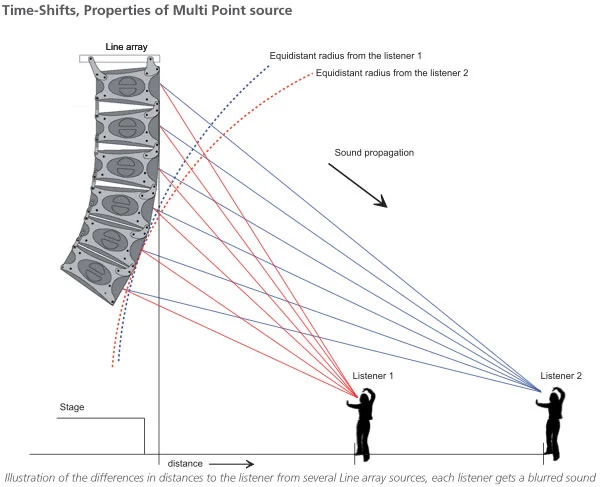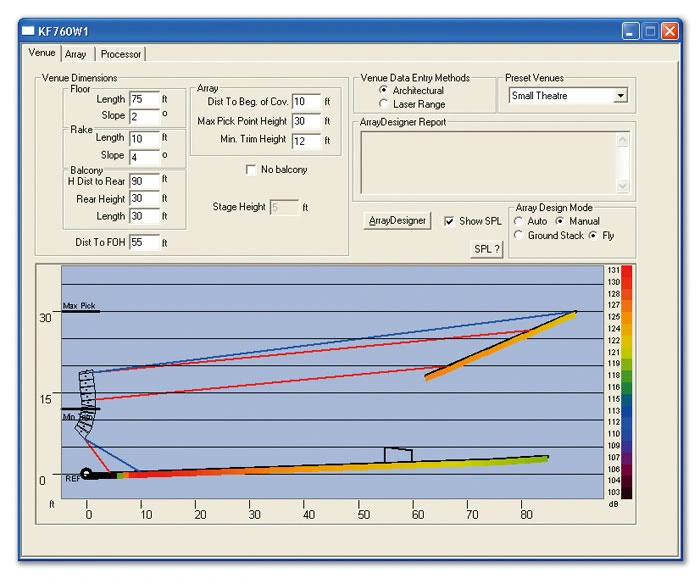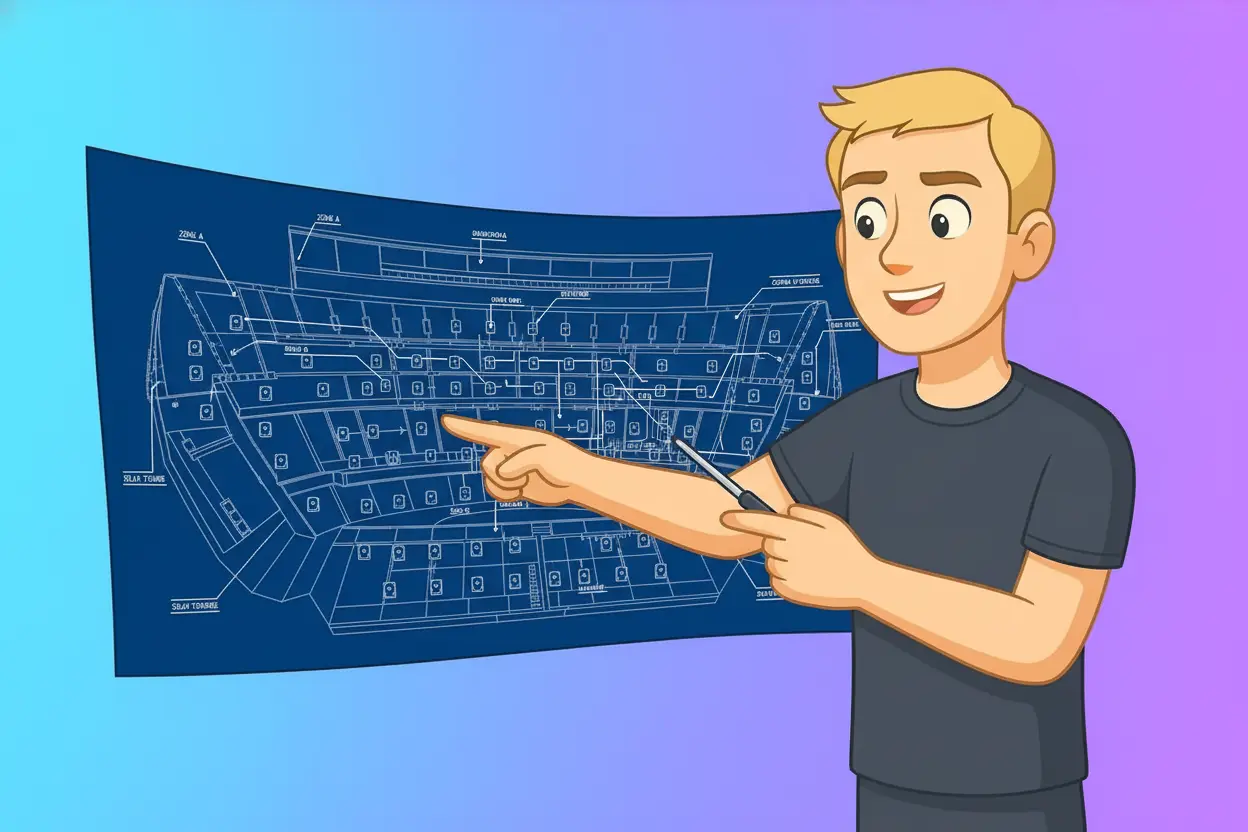You know that moment when the lights fade, the crowd goes quiet, and the first note hits perfectly clear from every corner of the arena? That feeling doesn’t just happen. It’s the result of patience, physics, and long nights spent tuning a room that’s anything but predictable.
When sound feels balanced, it’s not only louder, it’s more alive. That’s when you stop just hearing the music and start feeling it.
Key Takeaways
- Great sound design is about precision, not power. Even a one-degree tilt can transform a show.
- Materials and geometry inside an arena can either make or break clarity.
- Stage rigging keeps massive speaker systems safe, aligned, and steady above thousands of people.
- Smart software predicts where sound goes, but human judgment makes it perfect.
- The best results come from teams who listen as much as they measure.
Why Speaker Positioning Matters in Large Venues
Arenas are acoustic beasts. Concrete reflects, steel vibrates, glass scatters, and every person in a seat changes how the sound moves. Getting it right isn’t about making things louder; it’s about keeping every word and note intact no matter where you sit.
I’ve seen setups where the front row drowned in bass while the upper tiers caught nothing but echo. Good speaker positioning fixes that. Crews map every reflection, every obstacle, and then adjust placement and delay times until every seat hears the same performance. The same logic used in acoustic workplace ambiance applies here, just on a much bigger, noisier scale.
Sometimes, the difference between chaos and clarity is a few inches.
How Sound Moves Through Big Spaces
Sound waves behave like ripples, spreading, colliding, and fading as they travel. In a giant venue, those ripples meet walls, seats, lights, and people. Each reflection hits your ear a fraction of a second late, creating echoes that can blur a singer’s voice or make a snare drum sound like it’s coming from behind you.

Studies published in the Journal of the Acoustical Society of America show that untreated arenas can have sound pressure variations of over six decibels between zones (Kuttruff, 2009). I’ve worked in rooms where that difference felt even wider. Engineers fight those variations with delay alignment, tuning, and careful speaker placement so the audience hears one clear wave instead of a jumble of reflections.
At the 2024 Super Bowl Halftime Show, more than 200 line array speakers were digitally mapped across 70,000 seats. That kind of precision ensures every lyric lands exactly on time, no matter where you’re standing.
That’s the invisible art of live sound.
Line Arrays and the Art of Precision Sound
Line arrays are the backbone of arena audio. They hang like curved towers above the stage, pushing sound in focused beams instead of random bursts. That’s how engineers control where the music lands.
Engineers stack them vertically so they can laser-focus the sound and send it in a controlled vertical spread to cover the balconies.
These suspended line arrays rely on precise stage rigging so they stay stable and properly aligned.
Load sensors monitor tension and movement constantly. As AES systems engineer Mark Ureda once told his team, “Even a few millimeters of movement can alter sound coverage.” I’ve watched crews freeze an entire setup mid-show to check a single cable. It sounds obsessive, but that’s what makes a show seamless.
Key Factors That Shape Speaker Positioning
Audience Layout and Density
A full crowd soaks up high frequencies like a sponge. Empty seats, on the other hand, bounce sound everywhere. That’s why systems often need re-tuning as the audience fills in.
Venue Shape and Materials

No two buildings sound alike. Domes create long reverberations, while rectangular halls trap reflections in corners. Materials matter too. Concrete makes things sharp, glass scatters, wood smooths it all out. Crews use 3D modeling to predict trouble zones before anything gets plugged in (Everest & Pohlmann, 2015).
Event Type and Content
Every event changes the sound target. Rock concerts need punch and warmth; speeches need clarity. Many engineers program presets for different acts so transitions happen fast and smooth.
Safety Comes First in Live Sound
These rigs are heavy, sometimes several tons each, hanging above a sea of people. Safety isn’t just procedure; it’s sacred. Crews follow Audio Engineering Society (AES) and OSHA regulations, checking every connection and monitoring stress points in real time.
Modern systems use ANSI E1.6 sensors that measure load and report instantly if anything drifts. In 2023, a major tour stopped load-in after a single rig showed slight tension loss. The fix took fifteen minutes, but it prevented a potential collapse (Occupational Safety and Health Administration, 2023).
That’s the kind of caution you never see, but always benefit from.
Technology Behind Perfect Speaker Placement
Before a show even begins, engineers run simulations in EASE or Soundvision software. These tools create virtual 3D maps showing how sound will move through the space. Then comes real testing: tones, sweeps, and reference tracks.
I’ve stood in empty arenas at 2 a.m., listening to nothing but sine waves echoing through steel rafters. It’s dull but necessary. Teams use calibration mics and free music download apps to test playback at different frequencies. Even a half-decibel misalignment can shift how a crowd perceives energy and rhythm.
According to NIST, most large venues target less than a three-decibel variance across the audience area (NIST, 2021). That’s not easy but when you hit it, the whole room locks in.
Gear That Fine Tunes the Mix
Behind every clean, balanced mix is a table full of tools. Crews rely on:
- Spectrum analyzers to identify problem frequencies.
- Phase meters to align speakers into one seamless wave.
- Reference microphones for data-driven calibration.
- Signal processors that correct shifts in real time.
You’d be surprised how much difference a small adjustment makes. A one-degree rotation or a one-decibel tweak can turn a harsh upper tier into a warm, full-bodied section. That’s the magic most people never notice, but everyone feels.
Adapting to New Venues on Tour
Every night is different. One arena echoes, another swallows bass. Temperature, humidity, even altitude change how sound travels. Experienced crews walk in, listen once, and already know what needs fixing.
I’ve seen teams rebuild delay timings between soundcheck and showtime because the crowd changed the air density. That’s not perfectionism, that’s survival.
Where Sound Meets Emotion
Speaker positioning may sound technical, but it’s about connection. When the sound hits right, it feels like the whole crowd breathes in sync. Every beat lands where it should, and every lyric feels close, no matter the distance.
That same principle shapes how kids learn rhythm through music apps for kids. Whether it’s a classroom or an arena, sound isn’t just heard, it’s shared.
Conclusion
Perfect sound isn’t luck. It’s long rehearsals, cold hands on metal rails, and hundreds of tiny fixes. It’s what turns a loud concert into an unforgettable night. The best engineers know when to measure and when to listen.
When it all comes together, you don’t notice the equipment. You notice the moment. That’s the real craft behind speaker positioning.
FAQs
1) What Is The Main Goal of Speaker Positioning in Large Venues?
The goal is to deliver clear, even sound across every seat. Correct positioning helps control timing and direction so that no matter where someone sits, they hear balanced audio that feels consistent and natural.
2) Why Are Line Arrays Preferred For Concerts and Arenas?
Line arrays let sound engineers guide sound vertically and horizontally, focusing it exactly where the audience sits. This reduces unwanted echoes and prevents the front rows from being too loud while keeping the back rows clear and full.
3) How Does The Design of a Venue Affect Sound Performance?
Venue shape, size, and materials all change how sound behaves. Hard surfaces reflect it, curved roofs scatter it, and soft seats absorb it. Engineers study these details with acoustic modeling tools to predict problems and fix them before setup begins.
4) How Do Crews Keep Large Suspended Speaker Systems Safe?
Safety checks are constant. Crews use certified rigging gear, tension sensors, and follow AES and OSHA safety standards. These tools and rules make sure that every system stays stable throughout the show.



